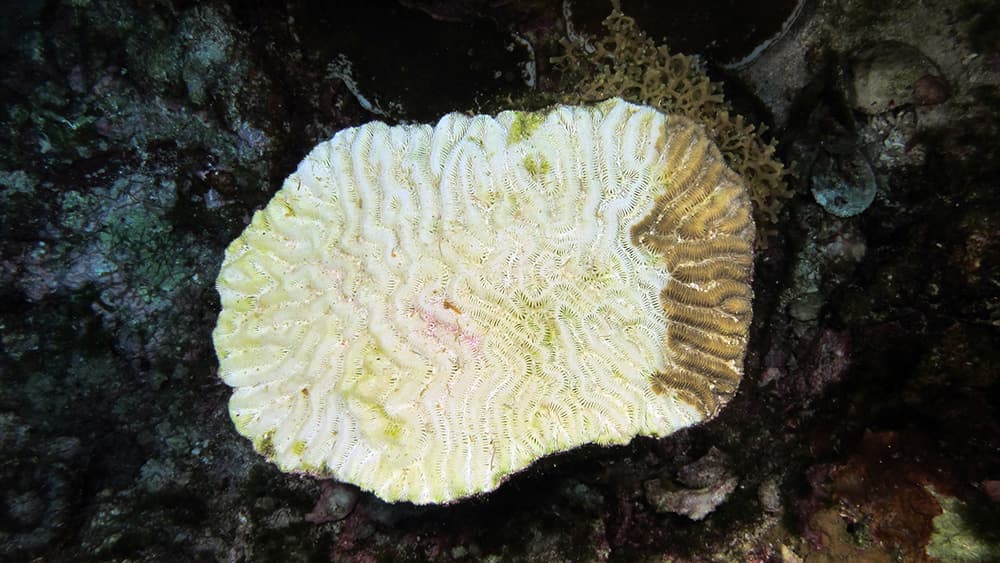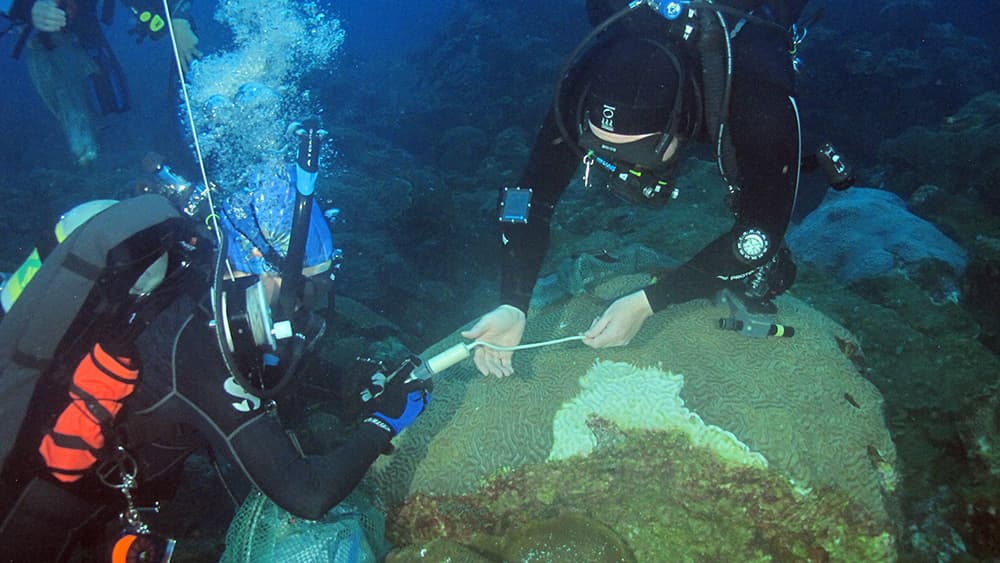Sanctuary Investigating Recent Coral Disease
September 22, 2022
NOAA is working to determine whether an unusual coral mortality event observed at Flower Garden Banks National Marine Sanctuary is linked to Stony Coral Tissue Loss Disease (SCTLD), which had not been previously reported in the sanctuary. During a collaborative monitoring cruise from August 30-September 2, Flower Garden Banks National Marine Sanctuary and National Coral Reef Monitoring Program divers observed brain and star corals at East and West Flower Garden Banks that appeared to show SCTLD-like symptoms, including lesions and tissue loss.
SCTLD is highly lethal and can result in the death of entire colonies. First discovered near Miami in 2014, the outbreak spread across Florida's Coral Reef. The disease is presumed to spread by water movement. Investigation is ongoing to identify the cause of SCTLD.

Divers photographed the impacted corals, documented their locations, and collected samples and other data that are now being reviewed by coral disease experts to either confirm or rule out the presence of SCTLD at Flower Garden Banks National Marine Sanctuary. During a similar mission in the same area the week prior, divers did not report seeing distressed corals.
Suspecting that the observed lesions may be SCTLD, a rapid response and intervention cruise was initiated with support from the National Marine Sanctuary Foundation. Research partners from Florida Atlantic University’s Harbor Branch Oceanographic Institute provided assistance and training on treatment techniques.

The response, in priority reef areas, included collection of additional images, collection of tissue samples for analysis at the University of North Carolina Wilmington, and treatment of more than 120 coral colonies. As an added precaution, small colonies from species that are highly susceptible to SCTLD were collected for potential future restoration and broodstock efforts currently housed at Moody Gardens Aquarium. All of the disease response efforts are recommended actions outlined in the sanctuary’s SCTLD Preparedness Plan, created in 2021.

